Best Tools and Books to Use for Oracle Responses to Buy in December 2025

Oracle PL / SQL For Dummies
- AFFORDABLE PRICES ON QUALITY PRE-OWNED BOOKS AVAILABLE NOW!
- ECO-FRIENDLY CHOICE: REDUCE WASTE BY BUYING USED BOOKS!
- EVERY BOOK IS CHECKED FOR QUALITY-SATISFACTION GUARANTEED!


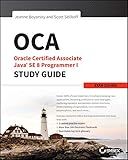
OCA: Oracle Certified Associate Java SE 8 Programmer I Study Guide: Exam 1Z0-808 (Sybex Study Guide)
- COMPREHENSIVE STUDY GUIDE FOR ORACLE JAVA SE 8 CERTIFICATION SUCCESS.
- PRACTICE QUESTIONS AND DETAILED EXPLANATIONS FOR EFFECTIVE LEARNING.
- EXPERT TIPS AND STRATEGIES TO BOOST EXAM READINESS AND CONFIDENCE.


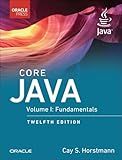
Core Java: Fundamentals, Volume 1 (Oracle Press Java)


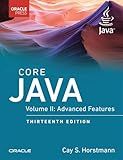
Core Java, Volume II: Advanced Features (Oracle Press for Java)


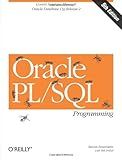
Oracle PL/SQL Programming


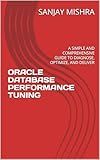
ORACLE DATABASE PERFORMANCE TUNING: A SIMPLE AND COMPREHENSIVE GUIDE TO DIAGNOSE, OPTIMIZE, AND DELIVER


To get a response from Oracle using C#, you can use the Oracle Data Provider for .NET (ODP.NET) library, which allows you to connect to an Oracle database and execute queries. To begin, you need to install the ODP.NET library and add a reference to it in your C# project.
Next, you can establish a connection to the Oracle database using the OracleConnection class, providing the connection string with necessary information like the server name, database name, user credentials, etc. Once the connection is established, you can create a command object (OracleCommand) to execute SQL queries or stored procedures.
After executing the command, you can retrieve the data returned by the Oracle database using the ExecuteReader method, which returns a data reader object containing the results. You can then iterate through the data reader to access the individual rows and columns of the query result.
Finally, remember to close the data reader and the connection to release resources and ensure proper cleanup. By following these steps, you can effectively get a response from an Oracle database using C#.
How to insert data into an Oracle database using C#?
There are several ways to insert data into an Oracle database using C#. One common approach is to use the Oracle Data Provider for .NET (ODP.NET) to establish a connection to the database and execute SQL Insert commands. Here is an example of how you can insert data into an Oracle database using C#:
- First, make sure you have the Oracle Data Provider for .NET installed. You can download it from the Oracle website.
- Add a reference to the Oracle.DataAccess.dll assembly in your C# project.
- Use the following code snippet to establish a connection to the Oracle database and insert data into a table:
using Oracle.DataAccess.Client;
class Program { static void Main() { string connectionString = "Data Source=YourOracleDataSource;User Id=YourUsername;Password=YourPassword;";
using (OracleConnection connection = new OracleConnection(connectionString))
{
connection.Open();
string insertQuery = "INSERT INTO YourTableName (Column1, Column2) VALUES (:value1, :value2)";
using (OracleCommand command = new OracleCommand(insertQuery, connection))
{
command.Parameters.Add(":value1", "Value1");
command.Parameters.Add(":value2", "Value2");
int rowsInserted = command.ExecuteNonQuery();
Console.WriteLine("Rows inserted: " + rowsInserted);
}
}
}
}
Replace YourOracleDataSource, YourUsername, YourPassword, YourTableName, Column1, and Column2 with the appropriate values for your Oracle database.
- Compile and run the above code, and it will insert a new row into the specified table with the values provided.
This is a simple example, and you can customize it further to suit your specific requirements. Remember to handle exceptions and close the connection properly to ensure a robust and efficient data insertion process.
What is the OracleBulkCopy class in C# and how can it be used to efficiently insert large amounts of data into an Oracle database?
The OracleBulkCopy class in C# is a class provided by Oracle's data access components to efficiently insert large amounts of data into an Oracle database. It is similar to the SqlBulkCopy class in .NET which is used for SQL Server databases.
OracleBulkCopy works by copying data from a data source (such as a DataTable or DataReader) to a destination Oracle database table. It optimizes the data transfer process and minimizes round trips to the database, resulting in faster insertion of large datasets.
To use the OracleBulkCopy class, you need to follow these steps:
- Create an instance of the OracleBulkCopy class and provide the connection string for the Oracle database.
- Set the destination table name and column mappings (if needed) between the source data and destination table.
- Provide the data source (such as a DataTable or DataReader) containing the data to be inserted.
- Call the WriteToServer method of the OracleBulkCopy class to start the copying process.
Here is an example of how to use OracleBulkCopy to insert data from a DataTable into an Oracle database:
using Oracle.ManagedDataAccess.Client; using System.Data;
DataTable dt = new DataTable(); // Populate the DataTable with data
using (OracleConnection connection = new OracleConnection("Your connection string here")) { connection.Open();
using (OracleBulkCopy bulkCopy = new OracleBulkCopy(connection))
{
bulkCopy.DestinationTableName = "YourDestinationTableName";
// Map columns if needed
bulkCopy.ColumnMappings.Add("SourceColumn1", "DestinationColumn1");
bulkCopy.ColumnMappings.Add("SourceColumn2", "DestinationColumn2");
// Provide the data source (DataTable in this case)
bulkCopy.WriteToServer(dt);
}
}
This example demonstrates how to efficiently insert large amounts of data from a DataTable into an Oracle database using OracleBulkCopy. Remember to handle exceptions and dispose of resources properly to ensure efficient and reliable data insertion.
What is the OracleParameter class in C# and how can it be used to pass parameters to SQL commands in Oracle?
The OracleParameter class in C# is used to represent a parameter to be passed to an OracleCommand when executing SQL commands against an Oracle database.
To use OracleParameter to pass parameters to SQL commands in Oracle, you can do the following:
- Create an OracleParameter object and specify the parameter name, type, and value. For example:
OracleParameter param = new OracleParameter("paramName", OracleDbType.Varchar2); param.Value = "paramValue";
- Add the OracleParameter object to the Parameters collection of an OracleCommand object. For example:
OracleCommand cmd = new OracleCommand("SELECT * FROM SomeTable WHERE columnName = :paramName", connection); cmd.Parameters.Add(param);
- Execute the OracleCommand using the ExecuteReader, ExecuteNonQuery, or ExecuteScalar method. For example:
OracleDataReader reader = cmd.ExecuteReader();
By using OracleParameter to pass parameters to SQL commands in Oracle, you can help prevent SQL injection attacks and improve the efficiency and security of your database queries.
How to work with BLOB (Binary Large Object) data in Oracle using C#?
To work with BLOB (Binary Large Object) data in Oracle using C#, you can follow these steps:
- Connect to the Oracle database: First, you need to establish a connection to the Oracle database using the Oracle Data Provider for .NET (ODP.NET) or a similar data provider.
- Prepare a SQL query: Write a SQL query that retrieves or inserts BLOB data from/to the database. For example, to insert BLOB data, you can use a query like:
INSERT INTO your_table (blob_column) VALUES (:blobData)
- Create a parameter for the BLOB data: Define a parameter of type OracleBlob to bind the BLOB data to the SQL query. For example:
OracleBlob blobData = new OracleBlob(connection); blobData.Write(data, 0, data.Length);
- Execute the SQL query: Prepare an OracleCommand object with the SQL query and bind the BLOB parameter to it. Then, execute the command to insert or retrieve BLOB data from the database.
- Handle the BLOB data in C#: After retrieving the BLOB data from the database, you can read the data into a byte array and process it as needed. For example:
byte[] data = new byte[blobData.Length]; blobData.Read(data, 0, data.Length);
- Close the BLOB object and database connection: Remember to close the OracleBlob object and database connection after you have finished working with the BLOB data.
By following these steps, you can effectively work with BLOB data in Oracle using C#.
